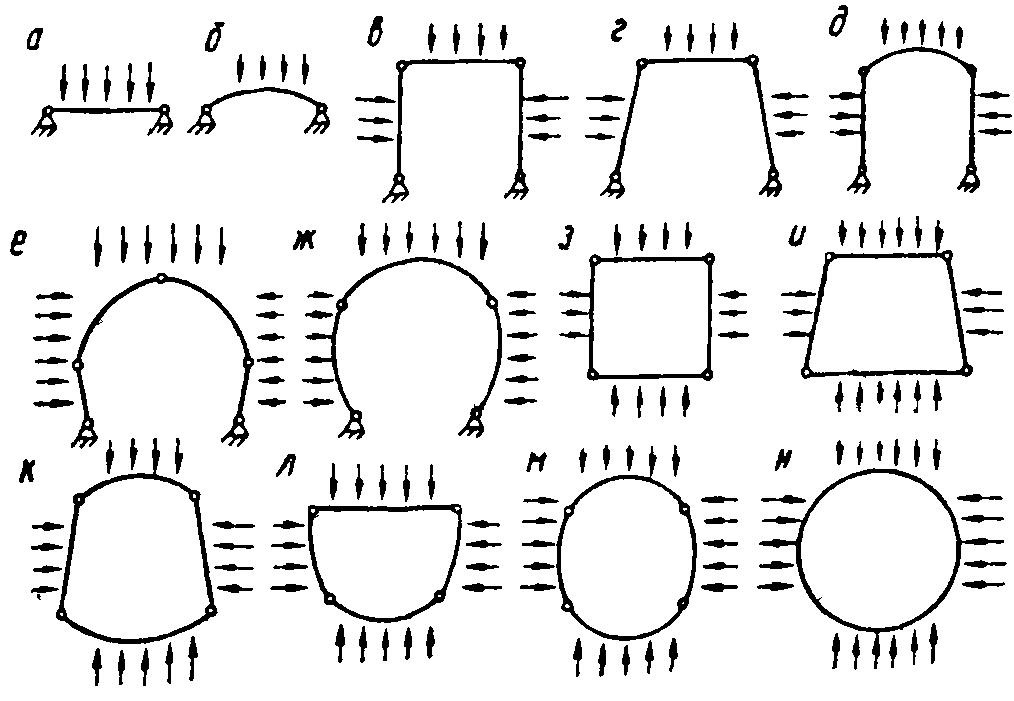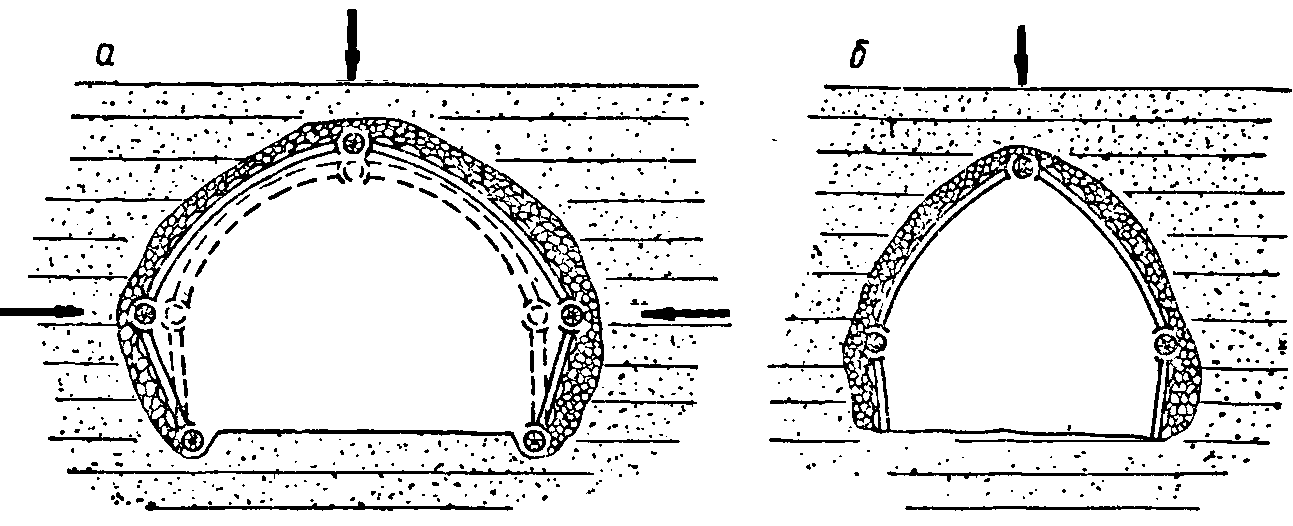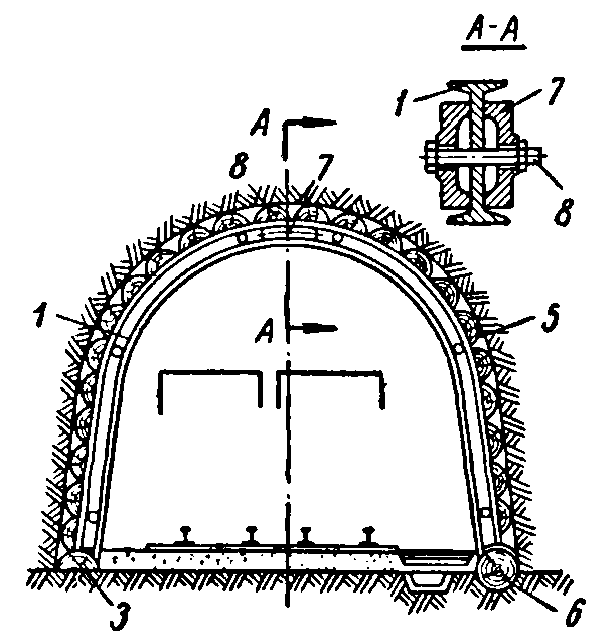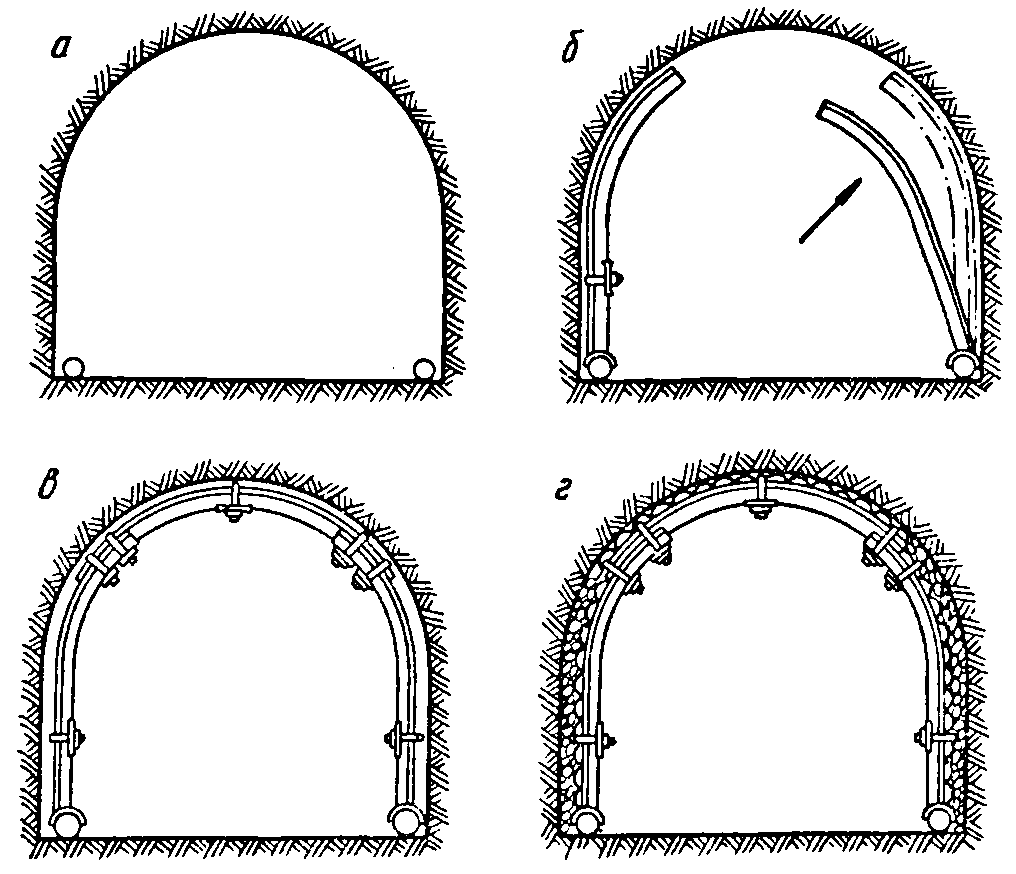Theme of the master thesis:
Content
- Introduction
- 1. Аctuality of work
- 2. The review of researches and developments
- 2.1 Developments roadways a combine or drilling-and-blasting works. Merits and demerits.
- 2.2 Constructions of supports. Their merits and demerits.
- 2.3 Ways the supports directed on fast input in operation.
- 2.4 Ways of protection based on unloading of rocks.
- Conclusions.
- References
Introduction
As show results of inspections of a condition of the development workings spent by the independent organisations (to DonNTU, DGU, DonGTU, etc.), among principal causes of loss of stability of the developments maintained out of zones of an extraction influence are: discrepancy of parametres of applied supports mining-and-geological and to maintenance specifications; absence of contact of a support with a rock mass after its erection, and also the subsequent failures of an equilibrium condition established in a massif by mining operations.
1. Аctuality of work.
There is a most of part preparatory mine workings is in dissatisfied a condition, therefore I consider necessary to carry out the analysis of known ways of increase of stability that will give the chance to allocate necessary zones for the further operation.
2. The review of researches and developments
2.1 Developments roadways a combine or drilling-and-blasting works. Merits and demerits.
The analysis of the technical literature devoted to increase of stability of developments, testifies to considerable quantity presence differently directed vectors characterising offered ways of solution of this challenge. So, in a number of operations authors notice that fact that more favorable conditions of maintenance are provided in the developments spent by combines. However, under statements of authors of other operations, influence of a way of carrying out on stability of a development is fixed only in a current of 8-12 months after its carrying out. At the same time, the know-how shows that the scope of more parts of park of heading machines is limited by durability of rocks containing development to 40 МPа.[1]
At use of drilling-explosive technology of a drivage, stability outer contour a massif raise by smooth-wall blasting application. This way considerably reduces intensity cavity made in adjacent strata to comparison with customary blasting (so, it is proved that at a smooth-wall blasting on sandstone depth cavity made in 7-8 times, and on shale in 3-4 times is less). More exact contouring of cross-section section is thus provided, the amplitude of irregularities of pedigree exposures, and consequently, and concentration of operating stresses decreases. Now smooth-wall blasting perfection goes by the way of mining of the technologies providing performance on walls of blastholes of profile cuts, focused on a breaking direction.
At the same time, wide application of a smooth-wall blasting in branch is interfered by that the existing boring equipment does not allow to bore cropper holes closely to a design contour, in parallel a development axis.
2.2 Constructions of supports. Their merits and demerits.
To other directions of increase of stability of metal arch supports in developments numerous attempts to create system "support-file" taking into account a vector of prevailing displacement in rock strata (to "adjust" a support to a massif) and time of occurrence of dense contact between a support and a massif (Fig. 1). For this purpose domestic and foreign developers of supports a considerable quantity of the constructions, called to solve these problems is offered.

DonNTU the support of agrarian and industrial complex-4 consisting of four interchangeable elements, connected by three locks which move together with links by support operation in a pliability mode is developed (Fig. 2). The construction has well proved in the conditions of intensive lateral loadings. In Kuzbas it is developed and the support well resisting to lateral displacement and loadings is applied подковообразная arch трехзвенная. In IGD of A.A.Skochinsky support МПК-А4 which top segment consists of two pieces of profile СВП connected among themselves yielding кулачковым in knot is offered. Presence of yielding knot in an arch crest provides a lateral pliability. In the St.-Petersburg college of mines the collapsible steel support is created. Each frame of a support consists of two curvilinear legs and a roof bar, connected by the special locks which are carrying out simultaneously functions of knots of a pliability and hinges. Depending on size and a direction of predicted displacement support elements can be connected under three various schemes. Constructions of ring yielding supports Ш1-К4 are developed for conditions of an all-round rock pressure also, a handheld computer, a handheld computer In Germany the iterative support of the increased pliability providing dense contact of a support with adjoining rocks is developed. It consists of the same links which a pliability in a zone is fastened by connecting overlays.

In all supports developed in last years, except change of a configuration, a construction and a location on perimetre of elements of a pliability the profiles used for manufacturing of supports were improved as well they, and also.
Considered above a construction of frame supports now have rather limited application because of complexity of manufacturing, presence of constructive defects, complexities of erection and the organizational reasons.
The sealing is applied to improvement of working conditions of a support in developments with long service life behind a support spaces. At the same time, a number of scientists ambiguously estimate influence of rigidity of a material created plug-back covers on yielding support operation. Besides, for conducting operations it is necessary not only the special equipment, but also preliminary performance of operations on hermetic sealing (isolation) of a development that does a way trudo - and material-intensive.
The combined constructions of the support which has found last years a wide circulation have been developed for heavy geological conditions (volume of application to 5 %): an anchor-meta[2-3], АНТ (an arch, a sealing), ШСНГ (a bar, a grid, a sealing) and others in which maintaining elements that or otherwise communicate for maintenance of teamwork with counter a massif. At the same time, these constructions have a number of technological defects, and the mechanism of their operation, from the point of view of geomechanics, till now is insufficiently studied.

As a prevailing kind of a support now remains arch yielding in variety of operations it is offered to apply various ways of strengthening of a support to increase of its stability, increases in its rigidity in a direction of prevailing displacement without essential constructive changes. So, for example, it is offered to use straining coupler at level of locks of the pliability, established by means of screw jacks. It, on a plan of authors, creates a twisting moment directed to the opposite side to the moment from external oblique load in a roof bar of a support.


2.3 Ways the supports directed on fast input in operation.
Works by different authors the interrelation between quality, and also properties of a backfilling spaces with the subsequent stability of a development is established. In operations by authors it is offered to fill cavities behind a support the crushed rock by means of special cars, to stack for a support fabric sleeves with hardening mixes, to fill space with polyfoam. Named ways all above above on mines practically are not used, as for their realisation the additional equipment is required, to place which rather difficult in the constrained conditions of a heading. Besides, the backfilling cannot be combined spaces with other technological processes in working face that reduces rates of drivages.
Last 20 years in DonNTU and DonGTU the ways of protection directed on smoothing of technical flaws (elimination of searches of rocks) in technology of an extraction of rock have been developed at a drivage. They are based on use of idea of an explosive backfilling spaces by blasting of the relieving charges which simultaneously are carrying out function of local unloading of rocks from raised stresses. Because of necessity precisely to observe technology and parametres of operations at the general high culture of manufacture, ways of wide application on mines have not found.
A considerable quantity of theoretical and experimental operations is devoted use in developments of a way injection the rock consolidation directed on maintenance of teamwork of a support and counter of a massif for improvement of a condition of a support[4]. Experience of application of a way shows that an injection of fastening solutions in a massif on depth to 3,0 m under pressure to 3,0 МPа - more an effective remedy of influence on stability of a support, than a sealing spaces. A necessary condition of application injection hardenings is presence round a development of a fissured zone. For realisation of a way the special equipment and great volume of operations on drilling and preparation injection wells is necessary.
By a considerable quantity of researchers it is proved that to fast input of a yielding support in operation promotes its preliminary thrust. For this purpose at support setting it is compulsorily pressed into a pedigree exposure, thus for the account collapse and sealings of rocks their best contact to a support is provided.[5]

2.4 Ways of protection based on unloading of rocks.
For the purpose of a decrease of stresses in rocks containing a development, and also preservations of natural durability of rocks and their drawing in teamwork with a support for protection of developments, in DonUGI and DonNTU a number of ways of protection on the basis of local unloading has been offered. These are ways downhole unloading and blasting-slot-hole unloading. Despite the simplicity and a received positive effect, ways have not found on mines of wide application for following reasons.[6]. Drilling of wells is necessary for making out of bearing pressure zones and it cannot be combined with processes of a sinking cycle. Besides, application of ways by 10-15 % is increased by displacement of rocks from a roof, there are complexities with maintenance of interfaces "longwall-drift". The way of blasding-slot-hole unloading is ineffective in conditions metamorphizationed and watered rocks.[7].
On the basis of ways of local unloading and strengthening, in KGMI and DonNTU ways of protection АРПУ and blasting-strengthenings have been developed. The essence of the first consists in redistribution of stresses round a development by their unloading, with separation of a part of rocks from a massif and their subsequent use as a natural building material for creation in roadway floor a floor arch from the strengthened rocks. Unloading is carried out by blasting in blastholes of inducer charges of explosive. Then the drilling blastholes in which force a fastening solution. The unloaded zone formed IN rock changes a parity of height and width of a development. It gets the elliptic form thanks to what concentration of stresses in a massif decreases that increases stability of a development as a whole[8].
The way of blasting-strengthening provides simultaneous performance of operations on unloading of a rock mass and its strengthening. Its essence consists in a blasthole drilling in counter a massif with placing of ampoules with fastening structure and explosive charges. At blasting there is a loosening of rocks lengthwise a blasthole, destruction of covers of ampoules and penetration of a fastening solution (polyurethane foam, epoxy pitches to a hardener) in the formed fractures.[9].
It is necessary to carry to lacks of the given ways high them labour-intensity and resource-demanding, and also necessity of presence of the additional equipment. [10-11].
In the late eighties the last century in DonNTU the way of a roadway maintenance "support-protection" which realises idea of combination of unloading of a containing massif from the raised stresses with fastening process has been developed. The essence of a way consists in formation on the set removal from a contour of a development of a zone of broken grounds that is reached by explosive the tubular anchors established on perimetre of a development in radially drilled blastholes. The counter pillar of rocks strengthened by anchors, urged to carry out a support role. [12].
Conclusions
The carried out analysis of the technical solutions directed on increase of stability of frame fastening in developments shows that the most perspective direction is mining of the combined ways of the protection allowing, on the one hand, to change a direction of prevailing displacement of rocks in a development, providing passport working conditions of a support, and also its dense contact to a containing massif, and on the other hand - as much as possible to involve counter a massif in teamwork with a support and to use thus natural durability of adjacent strata. Besides, offered ways should be a component of technology of carrying out and development fastening.
References
- В.В. Виноградов. Геомеханика управления состоянием массива вблизи горных выработок. – К.: Наук. думка, 1989. – 192 с.
- Терещук Р.Н. Состояние и перспективы применения анкерной крепи //Научный вестник. - 2000. - №2. - С.6-9;
- B.J. Buys, Р. S. Heyns, P.W. Loveday. Rock bolt condition monitoring using ultrasonic guided waves //The Journal of The Southern African Institute of Mining and Metallurgy. - 2009. - V. 108. -p.95-105
- Касьян Н. Н., Петренко Ю. А., Новиков А. О. О перспективах применения анкерной крепи наугольных шахтах Донбасса //Научные труды ДонНТУ. - 2009. №10. - ст. 109-115;
- В.Г. Горохов. Методологический анализ системотехники. – М.: Радио и связь, 1982. – 160 с.
- М. Месарович., Мако Д., И. Такахара. Теория иерархических многоуровневых систем: Пер. с англ. – М.: Мир, 1973. – 334 с.
- Инструкция по выбору рамных податливых крепей горных выработок. Изд. 2-е, перераб. и доп. – СПб., 1991. – 125 с.
- Г.Ю. Альбертс., К. Цастрау. Проходка горизонтальной породной выработки с использованием нового австрийского способа туннелестроения // Глюкауф, 1981. – № 7. – С. 20–26.
- Б.А. Картозия., В.А. Пшеничный. Теоретические основы крепления горных выработок крепью регулируемого сопротивления // Специальные способы строительства подземных сооружений и шахт. – М.: МГИ, 1984. – С. 600.
- А.В. Быков. Ускорить внедрение крепей регулируемого сопротивления на шахтах Донбасса // Шахтное строительство, 1986. – № 3. – С. 3–8.
- Г.В. Бабиюк. Системное обоснование и разработка адаптивных способов обеспечения надежности горных выработок: Автореф. дис… докт. техн. наук: 05.15.04 / Национальный горных университет. – Днепропетровск, 2005. – 35 с.
- Г.Г. Литвинский, Г.И. Гайко., Н.И. Кулдыркаев. Стальные рамные крепи горных выработок. – К.: Техніка, 1999. – 216 с.
